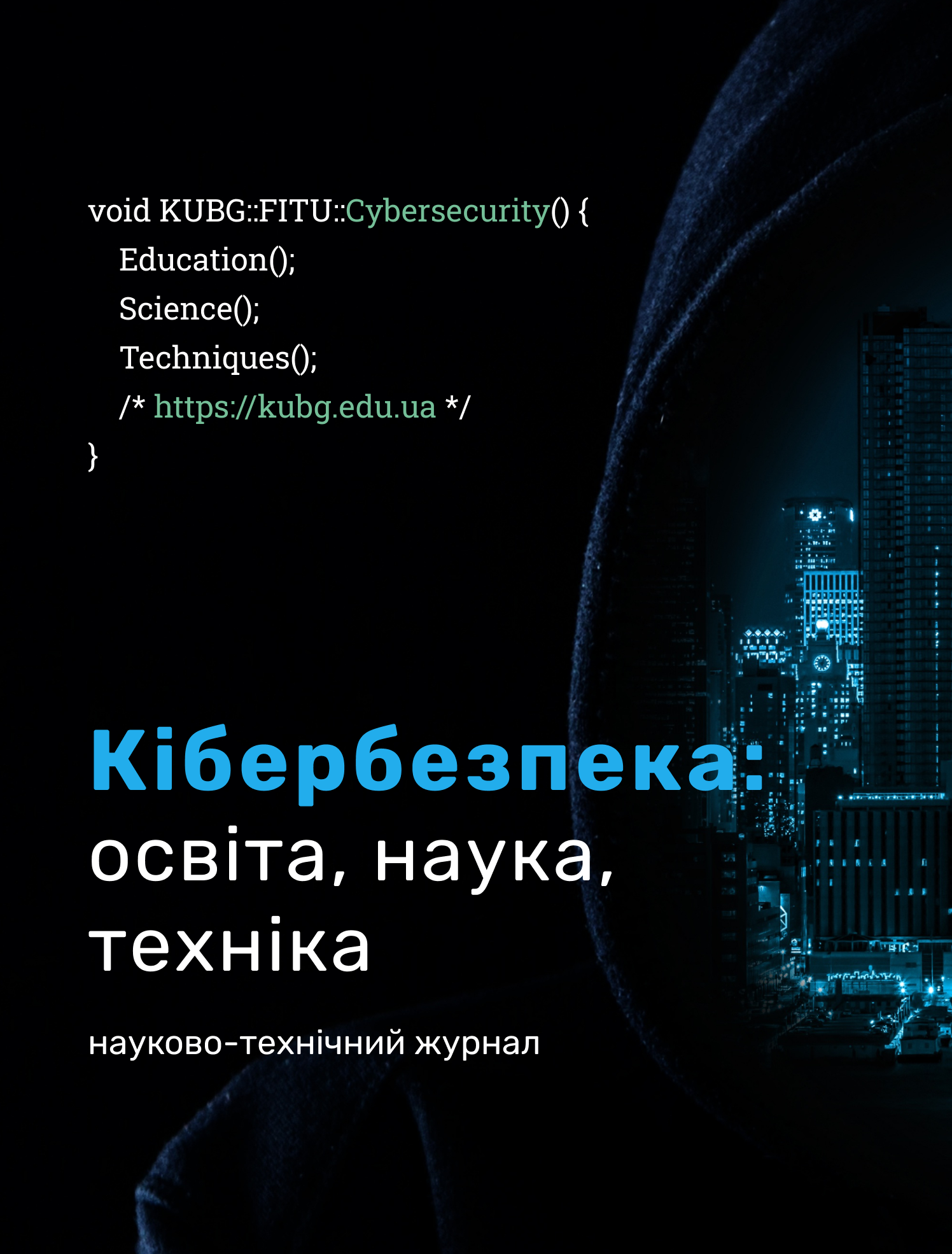APPLICATION OF IOT PROTOCOLS IN SURFACE WATER POLLUTION MONITORING SYSTEMS
DOI:
https://doi.org/10.28925/2663-4023.2024.23.8596Keywords:
IoT; water monitoring; LoRa; Zigbee; NB-IoT; Wi-Fi; BL; Bluetooth.Abstract
The rapid pace of industrial growth and the rise in consumerism are increasingly contributing to the deterioration of water quality, posing significant risks to both ecological systems and human health. The urgent need for effective monitoring of water resources to mitigate pollution and ensure the sustainability of these vital ecosystems has never been more apparent. The integration of Internet of Things (IoT) technologies into surface water monitoring presents a transformative approach to addressing these challenges. By automating the collection and transmission of data on water quality, IoT technologies offer a leap forward in our ability to efficiently monitor and manage environmental health. This article explores the application of various data transmission protocols, including Wi-Fi, Zigbee, LoRa, NB-IoT, and BLE, in the context of IoT-enabled water resource monitoring systems. Considerable attention was paid to determining the physical conditions of operation and the limitations they impose on the functioning of water monitoring systems. Each protocol is examined for its potential advantages and limitations in terms of energy efficiency, transmission range, and reliability under the specific conditions encountered in surface water monitoring. Through a comparative analysis, this study not only highlights the distinctive features and suitability of each protocol but also proposes a comprehensive framework for selecting the most appropriate technology based on the specific requirements of water monitoring projects. The findings of this research underscore the critical role of IoT technologies in advancing environmental monitoring and offer valuable insights for the development of more effective and sustainable water quality management strategies.
Downloads
References
Mobarhan, M., & Salamah, M. (2023). REPS-AKA5: A Robust Group-Based Authentication Protocol for IoT applications in LTE system. Internet of Things, 100700. https://doi.org/10.1016/j.iot.2023.100700
Chowdury, M., et al. (2019). IoT Based Real-time River Water Quality Monitoring System. Procedia Computer Science, 155, 161–168. https://doi.org/10.1016/j.procs.2019.08.025
Manoj Kumar, G., et al. (2021). IOT based water quality control and filteration system. Materials Today: Proceedings, 46, 3557–3560. https://doi.org/10.1016/j.matpr.2020.12.978
Bathre, M., & Das, P. (2022). Water Supply Monitoring System with Self-Powered LoRa Based Wireless Sensor System Powered by Solar and Hydroelectric Energy Harvester. Computer Standards & Interfaces, 82, 103630. https://doi.org/10.1016/j.csi.2022.103630
Kabi, J., et al. (2023). Low Cost, LoRa Based River Water Level Data Acquisition System. HardwareX, e00414. https://doi.org/10.1016/j.ohx.2023.e00414
Sokolov, V., Skladannyi, P., & Korshun, N., (2023). ZigBee Network Resistance to Jamming Attacks, International Conference on Information and Telecommunication Technologies and Radio Electronics, 161–165. doi: 10.1109/UkrMiCo61577.2023.10380360
Sokolov, V., Skladannyi, P., Astapenya, V. (2023). Bluetooth Low-Energy Beacon Resistance to Jamming Attack, 13th International Conference on Electronics and Information Technologies, 270–274. doi: 10.1109/ELIT61488.2023.10310815
Sah Tyagi, S., et al. (2021). Redesigning compound TCP with cognitive edge intelligence for WiFi-based IoT. Future Generation Computer Systems, 125, 859–868. https://doi.org/10.1016/j.future.2021.07.028
Benotmane, M., Elhari, K., & Kabbaj, A. (2023). A Review & Analysis of Current IoT Maturity & Readiness Models and Novel Proposal. Scientific African, e01748. https://doi.org/10.1016/j.sciaf.2023.e01748
Schneider, M., et al. (2022). Evaluation of Communication Technologies for Distributed Industrial Control Systems: Concept and Evaluation of 5G and Wi-Fi 6. Procedia CIRP, 107, 588–593. https://doi.org/10.1016/j.procir.2022.05.030
Devalal, S., Karthikeyan, A. (2018). LoRa Technology-An Overview, 2018 Second International Conference on Electronics, Communication and Aerospace Technology, 284–290. https://doi.org/10.1109/ICECA.2018.8474715
Hong, S., et al. (2023). LPWC: Long Preamble Wake-Up Communication Protocol for a LoRa Network. Internet of Things, 100787. https://doi.org/10.1016/j.iot.2023.100787
Gao, R., Jiang, M., & Zhu, Z. (2023). Low-power Wireless Sensor Design for LoRa-based Distributed Energy Harvesting System. Energy Reports, 9, 35–40. https://doi.org/10.1016/j.egyr.2023.08.056
Gao, M. (2022). Smart Campus Teaching System Based on ZigBee Wireless Sensor Network. Alexandria Eng. J. 61(4), 2625–2635. https://doi.org/10.1016/j.aej.2021.09.001
Siva Balan, R., et al. (2023). Development of Smart Energy Monitoring Using NB-IOT and Cloud. Measurement: Sensors, 100884. https://doi.org/10.1016/j.measen.2023.100884
THE 17 GOALS|Sustainable Development. (n.d.). Home|Sustainable Development. https://sdgs.un.org/goals
Drinking-water. (n.d.). World Health Organization (WHO). https://www.who.int/news-room/fact-sheets/detail/drinking-water
Gambi, E., et al. (2023). A WKNN-based Approach for NB-IoT Sensors Localization. Digital Communications and Networks. 101814. https://doi.org/10.1016/j.dcan.2022.04.033
Toschke, Y., et al. (2022). Distributed LoRa Based CO2 Monitoring Network – A Standalone Open Source System for Contagion Prevention by Controlled Ventilation. HardwareX, 11, e00261. https://doi.org/10.1016/j.ohx.2022.e00261
Ompal, Mishra, V., & Kumar, A. (2022). FPGA Integrated IEEE 802.15.4 ZigBee Wireless Sensor Nodes Performance for Industrial Plant Monitoring and Automation. Nuclear Engineering and Technology, 54(7), 2444–2452. https://doi.org/10.1016/j.net.2022.01.011
Xiao, J., & Li, J. (2020). Design and Implementation of Intelligent Temperature and Humidity Monitoring System Based on ZigBee and WiFi. Procedia Computer Science, 166, 419–422. https://doi.org/10.1016/j.procs.2020.02.072
Perez-Diaz-de-Cerio, D., et al. (2019). Low-cost Test Measurement Setup for Real IoT BLE Sensor Device Characterization. Measurement, 135, 814–827. https://doi.org/10.1016/j.measurement.2018.11.082
Borkivska, O., Zhurakovskyi, B., & Platonenko, A. (2022). Smart City Information System Based on Lora TechnologyannotatioN. Cybersecurity: Education, Science, Technique, 16(4), 113–128. https://doi.org/10.28925/2663-4023.2022.16.113128
Gupta, C., & Varshney, G. (2023). An improved authentication scheme for BLE devices with no I/O capabilities. Computer Communications, 200, 42–53. https://doi.org/10.1016/j.comcom.2023.01.001
Hirsch, C., et al. (2023). DynGATT: A Dynamic GATT-based Data Synchronization Protocol for BLE Networks. Computer Networks, 222, 109560. https://doi.org/10.1016/j.comnet.2023.109560
Qays, M., et al. (2023). Key Communication Technologies, Applications, Protocols and Future Guides for IoT-assisted Smart Grid Systems: A review. Energy Reports, 9, 2440–2452. https://doi.org/10.1016/j.egyr.2023.01.085
Opirskyy, I., et al. (2021). Problems and Security Threats to IoT Devices. Cybersecurity: Education, Science, Technique, 3(11), 31–42. https://doi.org/10.28925/2663-4023.2021.11.3142
Katila, R., Gia, T., & Westerlund, T. (2022). Analysis of Mobility Support Approaches for Edge-Based IoT Systems Using High Data Rate Bluetooth Low Energy 5. Computer Networks, 209, 108925. https://doi.org/10.1016/j.comnet.2022.108925
Sokolov, V., Skladannyi, P. &. Mazur, N. (2023). Wi-Fi Repeater Influence on Wireless Access, IEEE 5th International Conference on Advanced Information and Communication Technologies (AICT), 33–36, https://doi.org/10.1109/AICT61584.2023.10452421
Published
How to Cite
Issue
Section
License
Copyright (c) 2024 Антон Коваленко

This work is licensed under a Creative Commons Attribution-NonCommercial-ShareAlike 4.0 International License.




